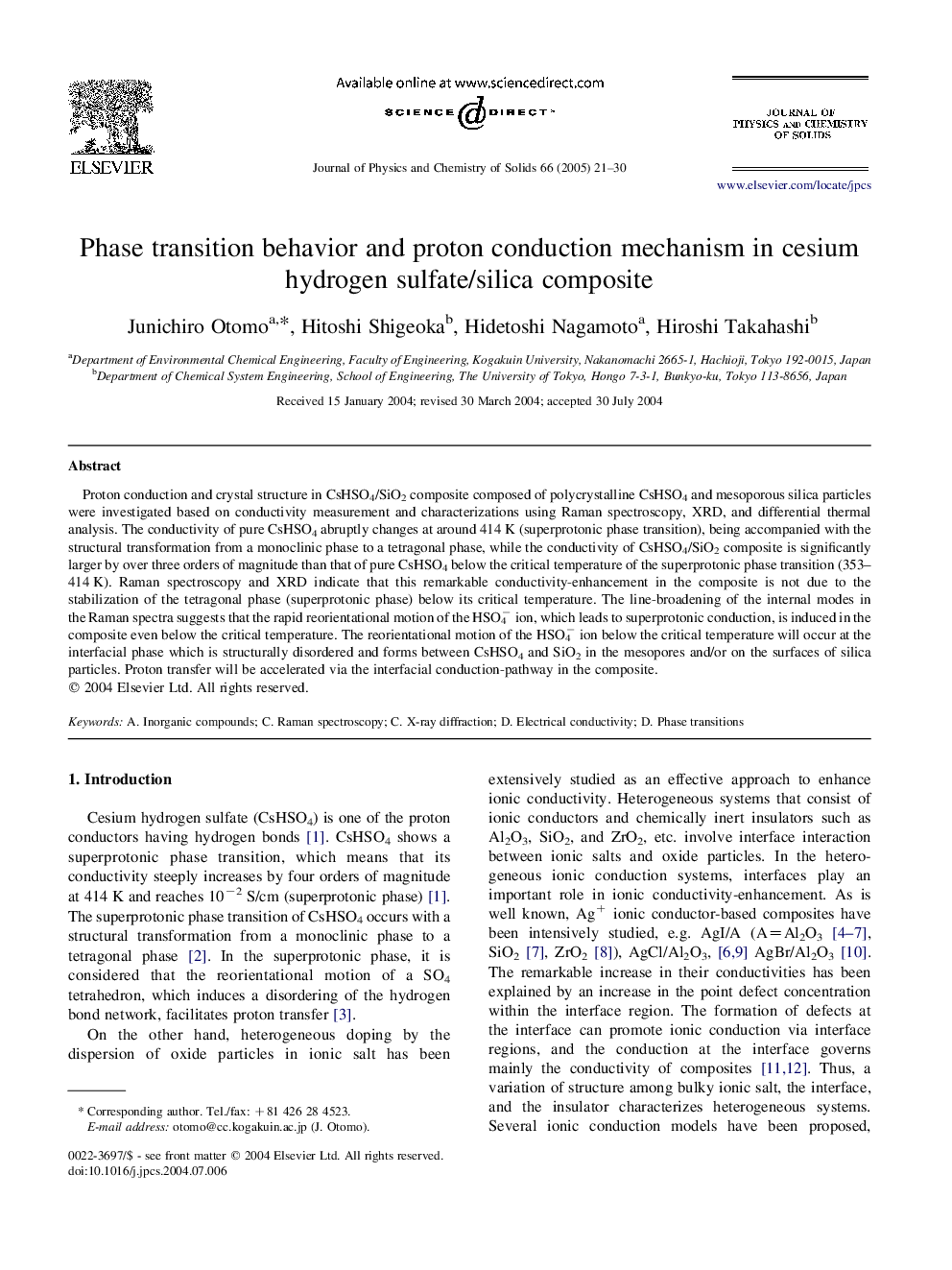| Article ID | Journal | Published Year | Pages | File Type |
|---|---|---|---|---|
| 9781853 | Journal of Physics and Chemistry of Solids | 2005 | 10 Pages |
Abstract
Proton conduction and crystal structure in CsHSO4/SiO2 composite composed of polycrystalline CsHSO4 and mesoporous silica particles were investigated based on conductivity measurement and characterizations using Raman spectroscopy, XRD, and differential thermal analysis. The conductivity of pure CsHSO4 abruptly changes at around 414Â K (superprotonic phase transition), being accompanied with the structural transformation from a monoclinic phase to a tetragonal phase, while the conductivity of CsHSO4/SiO2 composite is significantly larger by over three orders of magnitude than that of pure CsHSO4 below the critical temperature of the superprotonic phase transition (353-414Â K). Raman spectroscopy and XRD indicate that this remarkable conductivity-enhancement in the composite is not due to the stabilization of the tetragonal phase (superprotonic phase) below its critical temperature. The line-broadening of the internal modes in the Raman spectra suggests that the rapid reorientational motion of the HSO4â ion, which leads to superprotonic conduction, is induced in the composite even below the critical temperature. The reorientational motion of the HSO4â ion below the critical temperature will occur at the interfacial phase which is structurally disordered and forms between CsHSO4 and SiO2 in the mesopores and/or on the surfaces of silica particles. Proton transfer will be accelerated via the interfacial conduction-pathway in the composite.
Keywords
Related Topics
Physical Sciences and Engineering
Materials Science
Electronic, Optical and Magnetic Materials
Authors
Junichiro Otomo, Hitoshi Shigeoka, Hidetoshi Nagamoto, Hiroshi Takahashi,
